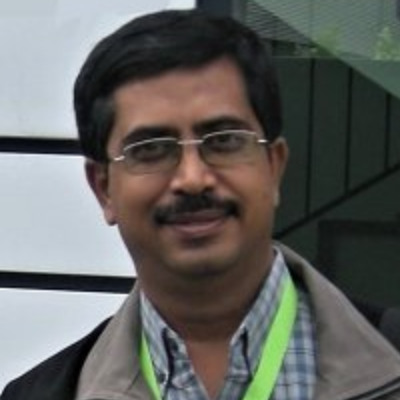
C. Patvardhan
Work place: Faculty of Engineering, Dayalbagh Educational Institute, Dayalbagh, Agra. 282005
E-mail: cpatvardhan@googlemail.com
Website: https://scholar.google.com/citations?user=HNNXOyYAAAAJ&hl=en
Research Interests: Quantum Computing Theory, Image Processing, Image Manipulation, Image Compression
Biography
Prof. C. Patvardhan is working in the Dayalbagh Educational Institute (DEI), Agra, UP, India as Professor in Electrical Engineering department. He obtained his B.Sc. (Engg.) from DEI in 1987, M.Tech. from IISc, Bangalore in Computer Science in 1989 and his Ph.D. in 1994. He has published more than 250 papers in Journals and Proceedings of Conferences and has won 20 Best Paper Awards. He has also published one book and has been an Editor of two Conference proceedings. He has been the PI and Co-PI of several funded R&D projects. His current research interests are Quantum and Soft Computing, Image Processing and he is a reviewer for International Journals and Conferences. He is a life member of Computer Society of India, Systems Society of India and Indian Science Congress Association and a Fellow of United Writers Association of India, Chennai.
Author Articles
Robust Adaptive Watermarking Based on Image Contents Using Wavelet Technique
By A. K. Verma C. Patvardhan C. Vasantha Lakshmi
DOI: https://doi.org/10.5815/ijigsp.2015.02.07, Pub. Date: 8 Jan. 2015
A good watermarking scheme should be able to perform equally well on all types of images irrespective of image contents because practically watermarking has to be applied to images of all types. In this paper, it is shown that in wavelet based spread spectrum technique, watermarking at level 1 decomposition is better for textured images while watermarking at level 2 decomposition is better for non-textured images to achieve maximum robustness against various types of attacks. The proposed wavelet decomposition level selection algorithm utilizes the edge histogram to classify the host image as textured or non-textured image and automatically selects the level of decomposition for robust watermarking. The use of Spread Spectrum watermarking technique and Bior6.8 wavelet, results better robustness. Performance of the proposed scheme and its relative effectiveness is demonstrated on both categories of images under different attacks.
[...] Read more.Other Articles
Subscribe to receive issue release notifications and newsletters from MECS Press journals